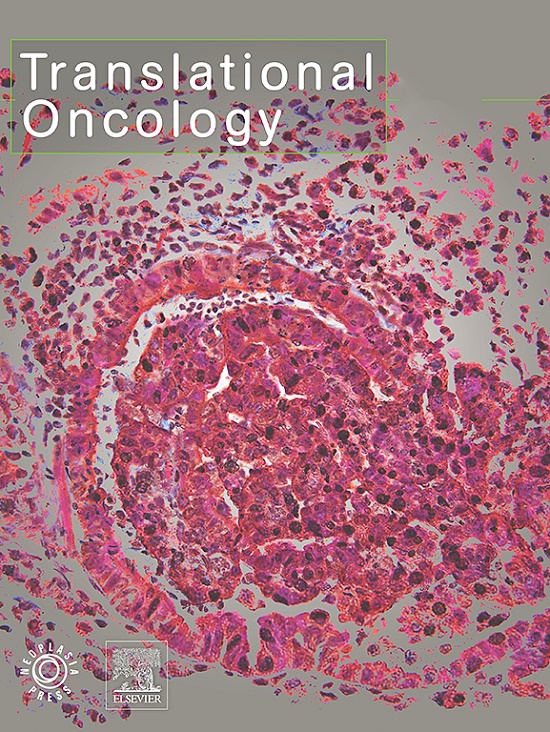强调 Wnt 信号在泌尿系统癌症中的功能:分子相互作用、治疗策略和(纳米)策略
IF 5
2区 医学
Q2 Medicine
引用次数: 0
摘要
癌症是一个复杂的多步骤过程,其特点是细胞异常生长和转移,以及肿瘤细胞产生抗药性。泌尿系统特别容易发生一组恶性肿瘤,即泌尿系统癌症,其中基因改变的积累是致癌的驱动力。在各种人类癌症中,Wnt 信号失调;β-catenin 核转移后,促进肿瘤进展并影响基因表达。泌尿系统癌症中的 Wnt 水平升高,其过度表达会促进肿瘤的生长和转移。此外,Wnt 信号的增加也会导致泌尿系统癌症的化疗抗药性,从而降低对顺铂、多柔比星和紫杉醇等化疗药物的敏感性。Wnt 上调可改变泌尿系统癌症的放疗反应。Wnt 的调控涉及多种分子通路,包括 Akt、miRNA、lncRNA 和 circRNA,它们都在致癌过程中发挥作用。靶向和抑制 Wnt 或其相关通路可减轻泌尿系统癌症的肿瘤发生。姜黄素和胸腺醌等抗癌化合物已显示出通过下调 Wnt 信号抑制肿瘤发生的功效。值得注意的是,纳米粒子已被证明能有效治疗泌尿系统癌症,有几项关于前列腺癌(PCa)的研究利用纳米粒子下调 Wnt 并抑制肿瘤生长。未来的研究应侧重于开发抑制 Wnt 单信号的小分子,以进一步抑制肿瘤发生,推动泌尿系统癌症的治疗。此外,Wnt 还可作为可靠的生物标志物,用于诊断和预后泌尿系统癌症。本文章由计算机程序翻译,如有差异,请以英文原文为准。
Highlighting function of Wnt signalling in urological cancers: Molecular interactions, therapeutic strategies, and (nano)strategies
Cancer is a complex, multistep process characterized by abnormal cell growth and metastasis as well as the capacity of the tumor cells in therapy resistance development. The urological system is particularly susceptible to a group of malignancies known as urological cancers, where an accumulation of genetic alterations drives carcinogenesis. In various human cancers, Wnt singalling is dysregulated; following nuclear transfer of β-catenin, it promotes tumor progression and affects genes expression. Elevated levels of Wnt have been documented in urological cancers, where its overexpression enhances growth and metastasis. Additionally, increased Wnt singalling contributes to chemoresistance in urological cancers, leading to reduced sensitivity to chemotherapy agents like cisplatin, doxorubicin, and paclitaxel. Wnt upregulation can change radiotherapy response of urological cancers. The regulation of Wnt involves various molecular pathways, including Akt, miRNAs, lncRNAs, and circRNAs, all of which play roles in carcinogenesis. Targeting and silencing Wnt or its associated pathways can mitigate tumorigenesis in urological cancers. Anti-cancer compounds such as curcumin and thymoquinone have shown efficacy in suppressing tumorigenesis through the downregulation of Wnt singalling. Notably, nanoparticles have proven effective in treating urological cancers, with several studies in prostate cancer (PCa) using nanoparticles to downregulate Wnt and suppress tumor growth. Future research should focus on developing small molecules that inhibit Wnt singalling to further suppress tumorigenesis and advance the treatment of urological cancers. Moreover, Wnt can be used as reliable biomarker for the diagnosis and prognosis of urological cancers.
求助全文
通过发布文献求助,成功后即可免费获取论文全文。
去求助
来源期刊

Translational Oncology
ONCOLOGY-
CiteScore
8.40
自引率
2.00%
发文量
314
审稿时长
54 days
期刊介绍:
Translational Oncology publishes the results of novel research investigations which bridge the laboratory and clinical settings including risk assessment, cellular and molecular characterization, prevention, detection, diagnosis and treatment of human cancers with the overall goal of improving the clinical care of oncology patients. Translational Oncology will publish laboratory studies of novel therapeutic interventions as well as clinical trials which evaluate new treatment paradigms for cancer. Peer reviewed manuscript types include Original Reports, Reviews and Editorials.
 求助内容:
求助内容: 应助结果提醒方式:
应助结果提醒方式:


